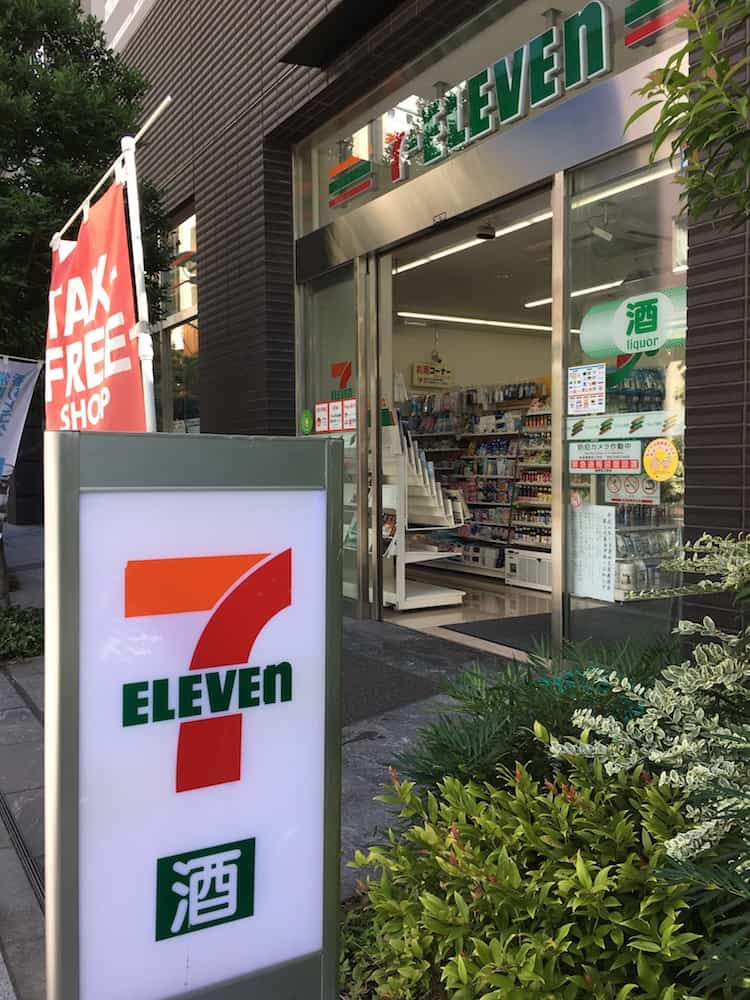
A year abroad as a Japanese exchange student is equal parts exhilarating and intimidating. One of the most stressful things is figuring out how to live in a different country with a different language and different customs. Through my process of trial and error, paired with research, I’m here to share the things you need to know before moving to Japan.
8 Things You Need to Know Before Moving to Japan
Japanese Money
Important Documents You Need
Health Insurance
Rechargeable Cash Card
Internet Connection
Cell Phone Service
Language Barrier
Eating in Japanese Restaurants

Japanese Money and Where to Get It
Japan’s currency is the Japanese Yen. The exchange rate is roughly 110 Yen to 1 USD. When deciding how much money you should bring, consider your duration and what you’re doing. Expenses like meals, school supplies, and transportation costs add up quickly. If your exchange lasts for more than a few months, I would recommend bringing 100,000 Yen (roughly $900 USD) to start.
Several days before you leave on your trip, order Japanese Yen through your bank. To ensure you get the right currency, stress Japanese Yen, not Chinese Yuan that’s sounds similar. You can still get Japanese Yen at the airport though expect hefty fees and poor exchange rates.
I suggest starting a spreadsheet to track your spending. This really helps to keep on a budget. Living in a new country offers lots of ways to spend money.
In Japan, the most popular method of payment is cash, unlike the U.S.As an exchangestudent, it’s likely you will use cash for most purchases.
Both credit and debit cards work at most retail stores and restaurants in metro areas. Though don’t be surprised if cards are rejected in a small shop or restaurant off the beaten path. Personally, I have only used my debit card to withdraw money from an ATM. And I use my parents’ credit card for large purchases.
To get more Japanese Yen withdraw it out of a convenience store ATM. I’ve found the best working ATMs at 7/11 for my bank. An English display will be always available, so no need to worry about the language barrier.
Depending on your bank, you will still get hit with some fees. My bank usually adds up to $10 USD to each withdrawal, so make sure to withdraw larger amounts to avoid losing too much money. Be aware that sometimes the ATM machines will reject American cards. If this happens, don’t be alarmed, as this isn’t unusual. If you need the money immediately, just find another ATM and try it there. Another option is to wait a couple days and try again.
Important You Need Documents
U.S. Passport plus a color copy
Visa for Educational Stays over 90 days
Japan Resident Card
For your Japanese exchange year, you will need to obtain a visa before you leave the U.S. Needed for stays over 90 days, your school in Japan will send you a certificate of eligibility, or COE. The COE comes from the Ministry of Japan and a very important document. Don’t lose it.
After receiving your COE, send it along with your signed valid U.S. passport and a color copy, acompleted visa application and an additional passport photo to the nearest Japanese embassy in the U.S. In my case, the Japanese Embassy knew of my particular exchange program and expected my visa application. I sent in all the required documents myself though you can hire a service to obtain the required visa for you if the process seems intimidating.
Note: Send all documents via FedEx or UPS, and a minimum of USPS Priority Mail with a signature required.
After arriving in Japan, you will be required to obtain a Japanese Resident Card while going through immigration. The immigration officer will take your U.S. passport and your Japanese visa. After looking over the documents, they will take your picture and get your fingerprints then issue your Japanese Resident Card. You will carry it instead of your U.S. passport during your exchange year for identification.
Keep your passport in a safe and secure location. And remember to leave a color copy of your passport with your parents or guardians.
Health Insurance for Exchange Students
My host family registered my permanent address. My school counselor and host family coordinated with each other to get my health insurance card. Japan offers good national health care, so routine doctor visits are not expensive and fairly convenient. Just bring your insurance card and necessary documents along with you.

Rechargeable Cash Card
Right after arriving,buy a rechargeable cash card at the nearest vending machine, usually located near the publictransportationgates. The Suica or Pasmo cards are accepted as payment at most metro stations and buses across Japan.
Internet Connection
Finding a WiFi connection in Japan isn’t as difficult as you might think.Find many options for logging onto WiFi, and here’s a few of the most popular choices.
Portable WiFi–Tends to be more expensive and more complicated than other choices when using for several months. Portable WiFi is ideal for stays under three weeks. If portable WiFi fits your situation, find a service that allows you to pick up your device at the airport when you arrive. You may have to reserve your portable WiFi device several days or weeks before your trip.
Public WiFi–It’s free and very common in Tokyo. Most large train stations and many large, public areas will offer WiFi. Free WiFi isn’t very strong, so don’t rely on it to do anything more than send short texts or do an internet search.
If you’re wondering if your favorite online media sites are available, you have nothing to fear. Large media platforms such as Netflix, Instagram, Youtube, and Facebook are all available in Japan. Other than a time difference, all of these sites still function normally. If your favorite site isn’t supported in Japan, you still have nothing to fear. You can buy a VPN connection for a few dollars a month if you absolutely cannot live without it.
Cell Phone Service
For both short and long terms stays, your phone connection is a common concern. As with WiFi connections, find several options available.
International Data and Phone Service–First contact your cell phone carrier for more information. Some companies, like Sprint, have a direct relationship with a Japanese cell phone carrier. Personally, this was the best option. For a few additional dollars a month I stayed on my parent’s plan with service from a Japanese cell phone carrier.
SIM Cards–Another great option is to rent a SIM card. When looking to rent a SIM card, research several different companies and data plans. Most companies will walk you through the process. In general, most companies have you pick up your SIM card up at the airport when you arrive. You can also purchase a SIM card at large electronics stores, such a Yoshida Camera or BIC Camera. In Tokyo, find several locations such as Shibuya, Shinjuku, and Ikebukuro.
Rental Phones–Another option to consider when deciding cell service abroad. Like renting WiFi or a SIM card, find an English website to rent a phone. Each company offers different rates and phones, so be sure to research your options. Renting an entire phone is somewhat impractical if your exchange spans over several months, but is a viable option if your stay is only a few weeks. Generally, rates for a smartphone can be as high as 5000 Yen (around $45) a week with hidden fees and high charges for calls. If you don’t have a large budget, renting a sim card or just simply using WiFi may be a more economic option.
Dealing with the Language Barrier
One of the first things you encounter when moving to Japan is the language barrier. Though tourists and exchange students don’t need to know Japanese to make it through the first weeks. However, make an effort to learn at least a few key phrases.
Arigato gozaimasu means thank you and sumimasen means excuse me. Learning these two phrases and using them in Japan shows that you’re making an effort to learn Japanese culture and the language. Even if you don’t pronounce it perfectly, people will appreciate your effort.
Fortunately, Japan, Tokyo especially, is surprisingly English-friendly. Street names, subway stations and many other public signs are labeled in Japanese and English. Along with these conveniences, most hospitality staff will speak enough English to communicate with you.
Translation apps may be useful for your stay in Japan. As a tourist, I never used or felt a need to use these apps so downloading one for a short trip is really not necessary. However, as an exchange student, it’s very helpful to communicate a specific topic. I use Google Translate as my go-to since it’s convenient and reliable. When using a translation app, it’s rarely exactly right. Japanese and English are incredibly different languages so don’t expect an app to get it right every time.

Eating out in Japanese Restaurants
Eating out in Japanese restaurants may be intimidating at first, but I encourage you to try. Sampling new foods will be a memorable experience with new tastes and textures.
Many restaurants offer English translations on menus. Or find convenient pictures on menus so you can point at your selection. If you have any dietary restrictions, make sure to do research beforehand.
I suggest using a translation app to learn the Japanese name of your food restriction or allergy. That way you can show it to the wait staff or the host. In Japanese, the word for allergy is arerugi.
Note that the -gi is pronounced with a hard g, the way you would pronounce ghee. Vegetarian and Halal diets are widely recognized in Japan, especially in Tokyo.
Tips on Dining in Japan
- Learn how to use chopsticks before your trip.
- Western silverware is available most places.
- Tipping isn’t customary.
- Japanese frown on eating and walking, including in food markets and food halls.
- Japan shouldn’t pose any concerns with water or food sanitation.
First Trip to Japan?
I’m a high school exchange student living in Tokyo for a year. Here’s a list of articles that will help you plan your trip.
3 Day Itinerary for Tokyo
Spend at least a few days exploring the largest city in the world.
Prep and Pack for Japan
Get all the details for planning your trip or year abroad.
Japanese Exchange Student Packing List
Pack what you need without going over your weight limit for checked baggage.
Dos and Don’ts for Visiting Shrines and Temples
Learn the etiquette before you tour a shrine or temple in Japan.
Japanese Holidays
Learn about the special Japanese Holidays.
30 Japanese Snacks You Have to Sample
Eating in Japan is part of the fun.
Robot Restaurant
This pop culture show is a favorite because of its pyrotechnics and fast-paced show.
Food Tour
Sample Japanese cuisine with a local guide, a must for a first time visitor.
Disclosure
This post contains affiliate links.





Comments are closed.